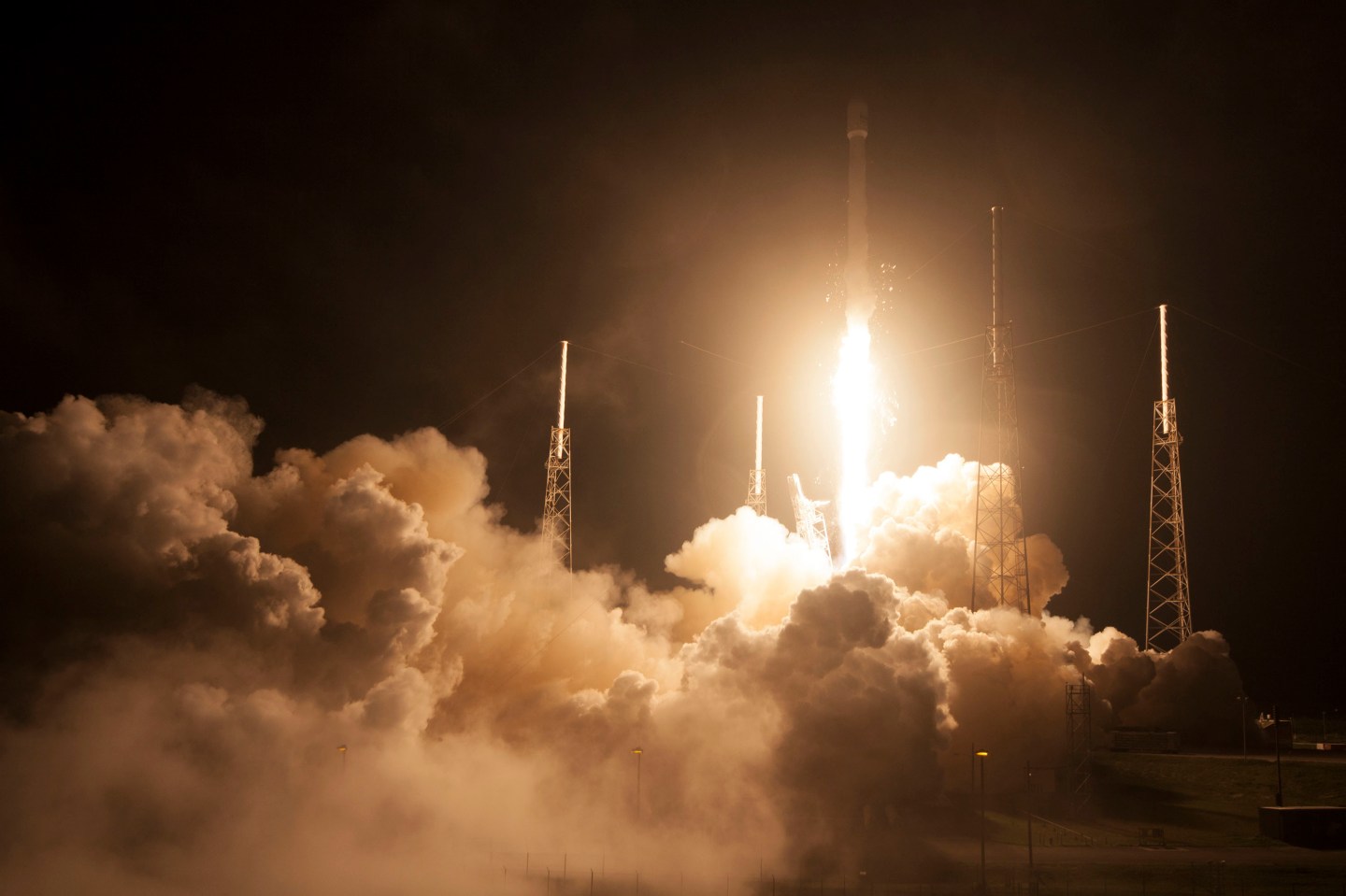With pressure mounting to wean America off the Russian-built RD-180 rocket engines needed to launch sensitive national security assets into orbit, the Department of Defense is turning to U.S. industry for new ideas. Next month, the Pentagon will seek proposals for—ideally—two competing space launch technologies capable of replacing the RD-180, each of which would be developed under a public-private partnership.
But while the U.S. wants to generate more competition and flexibility within its space launch market, the idea looks more feasible on paper than in practice. It’s unclear (and unlikely) that the nascent U.S. space launch industry can produce new, reliable launch technologies to replace the Russian engines by the 2019 deadline mandated by Congress. And with SpaceX the only private spaceflight company currently on the road to earning U.S. Air Force launch certification, the Pentagon—despite its efforts at fostering competition—may soon trade one launch monopoly for another.
Currently a joint venture between Boeing and Lockheed Martin called United Launch Alliance (ULA) owns a monopoly on national security space launches, using legacy Atlas V and Delta IV heavy lift rockets to loft security-related assets into orbit. In an effort to trim cost, the Pentagon plans to retire the expensive Delta IV by 2018. The less-costly Atlas V requires the soon-to-be-banned RD-180 to fly.
Meanwhile, the Air Force expects to certify SpaceX’s Falcon 9 for smaller-payload national security launches in June. Its larger Falcon Heavy rocket—one capable of stepping into the heavy-lift role now occupied by the Atlas V and Delta IV—will fly for the first time later this year. It could enter service as soon as 2018.
The Pentagon’s plan for diversifying its launch options beyond the RD-180 and the Delta IV involves cultivating at least two public-private partnerships into which it would sink $220 million to help develop alternatives to the RD-180. The Pentagon next month will ask companies to submit their proposals for those partnerships, with the aim at producing at least two viable competing launch systems by 2019. Those systems would then compete for up to 28 national security-related launches expected between 2020 and 2024.
The Pentagon roadmap’s main problem is one of timing. Aside from SpaceX, there are only a few U.S. companies in the rocket engine business. ULA is looking into technologies from both GenCorp’s Aerojet Rocketdyne and the Jeff Bezos-backed private space venture Blue Origin. But in a statement last week ULA CEO Tory Bruno said neither technology could be developed and certified before 2022—a full three years beyond Congress’s deadline to stop using the RD-180.
Nor does the Pentagon really want a fast-tracked rocket engine, says Marco Caceres, senior analyst and director of space studies at aerospace consultancy Teal Group. “The engine is the core of your rocket, and the majority of things that go wrong in a rocket have to do with the engines,” he says, “You really don’t want to rush this.”
Moreover, the Pentagon plan intends to spread the cost of technology development out via public-private partnerships, each of which would require roughly a dozen private sector space launches each year to remain viable. That launch demand doesn’t yet exist, nor does a spike in demand appear on the horizon.
All that places SpaceX in a particularly good position to take on a lot, if not all, of the military’s space launches toward the end of this decade, at least until other launch technologies can be adequately matured. Barring a change in Congress’s stance on RD-180 imports or some kind of mishap that jeopardizes its certification, SpaceX might not just break ULA’s military launch monopoly—it may become the monopoly.
“Overall, SpaceX is starting to look very all-American and very attractive, and ULA looks weak without its Delta IV,” Caceres says. “All along ULA has had its eggs in one basket, but that only works as long as you’ve got a monopoly.”
[fortune-brightcove videoid=3790264082001]
